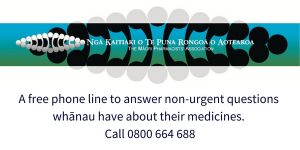These can be supplied by a pharmacist in a pharmacy without a doctor’s prescription.
These medicines are kept in a restricted area. They're not available for self-selection from the pharmacy shelves, and you have to talk to a pharmacists before you can buy them.
An example is Panadol Osteo® which has 665 mg of paracetamol in each tablet.
What happens if I want to buy a pharmacist-only medicine?
When supplying these medicines, pharmacists have to do these things:
- Ask specific questions to make sure the medicine is safe and appropriate for you, for example they’ll ask if you take any other medicines and if you have any allergies or medical conditions. The pharmacist needs to confirm what the problem is and make sure the treatment is appropriate for you.
- Provide you with information about the safe and correct use of the medicine
- Record the sale of the medicine including your name and address.
Examples of some of the conditions which can be treated with pharmacist-only medicines are:
- anaphylaxis
- cold sores
- stomach cramps
- eye infections
- fungal infections of the toe or fingernails
- hay fever or rhinitis
- haemorrhoids
- migraine
- mouth ulcers
- muscle pain
- nausea caused by migraine
- skin problems such as itching, rashes, inflamed fungal infections
- thrush of the mouth or vagina
- travel sickness
- warts.
Read more about pharmacist-only medicines(external link).
Prescription medicines with an exemption
There’s a class of medicines that are prescription medicines that can be supplied by a pharmacist if they’ve completed extra training to supply these medicines, Examples include emergency contraception and some oral contraceptive pills.
All vaccines administered by trained vaccinator pharmacists come under this medicine classification.
Examples of some of the conditions which can be treated with prescription medicines with an exemption are:
- erectile dysfunction
- sleeping problems
- urinary tract infections.
As with pharmacist-only medicines you need to have a consultation with a pharmacist. The pharmacist may offer to take you to private room before answering any questions.
Your pharmacist can only supply these medicines using certain criteria. They may not be able to supply the medicine if you don’t fit the criteria, eg, if your blood pressure is outside the recommended range for safe supply of the medicine. They might advise you to see your doctor or nurse prescriber if they're unable to supply what you need.









